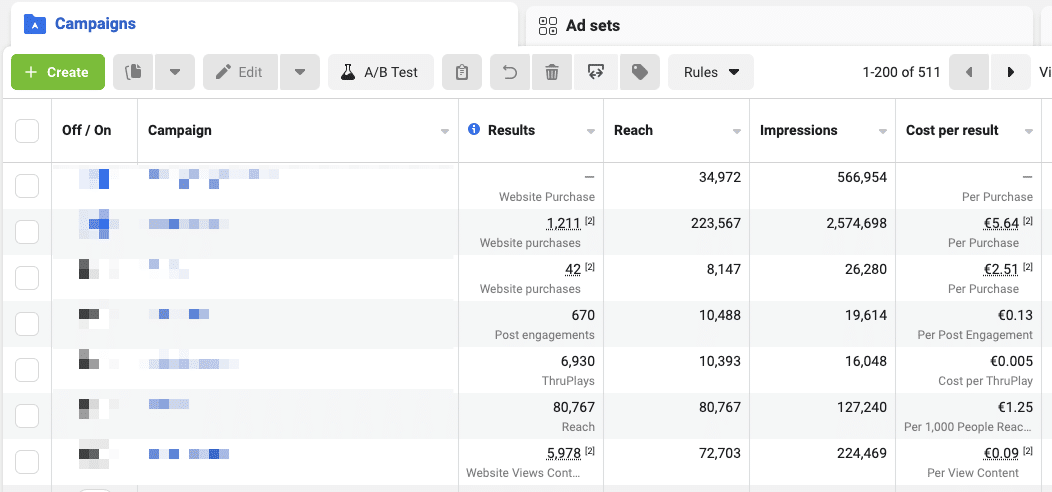There are four elements that will result in high-performing Meta advertisements if you regularly prioritize them and get them correct. Make an investment in these key areas if you handle advertising for others or operate an agency.
Let me start by stating the obvious: There are several variables that affect how well your advertisements succeed. I’m not saying you can disregard everything else and focus just on these things.
However, these are by far the most significant. I’m confident in stating that a mix of these elements is probably at play if you’re not seeing the desired outcomes.
I should clarify what I mean when I use the term “performance.” Not only did your advertisements seem to work successfully. You received more than simply an excellent CTR or other gratifying outcome. Your advertisements were successful in a meaningful and quantifiable sense.
Performance Goal
The most significant influence on the delivery of your ads is the Performance Goal, which is specified in the ad set. Don’t make this too complicated. The Performance Goal is precisely that—a goal. You wish to take this action. This is how success is determined. It also serves as Meta’s success metric and the one that is given priority when it comes to delivery optimization.

There is no literal algorithm. Meta will use every effort to secure for you the best feasible pricing on the greatest number of such actions. This entails displaying your advertisement to those who are most likely to attend that event.
Because of the Performance Goal, broad targeting is made feasible. The algorithm can identify the individuals most likely to carry out the activity you want them to do since it knows what you want.
Meta will do whatever it takes to convince you to take those activities, including abusing placement flaws that can artificially inflate your results. You will undoubtedly receive a lot of surface-level actions if your performance goal is to set up surface-level activities. But conversion rates might not be high.
You should aim to optimize for a conversion rate whenever it is feasible. Even the quality of the conversions Meta optimizes for and yields to you are adjustable.
Either the quantity or the value of purchases can be optimized. You can optimize for any leads or conversion leads.
There isn’t just one Performance Goal that is “right” to use all the time. However, this particular step can be the most important. Based on the goal, I have seen various results.
Attribution
When an advertisement converts, Meta credits it with an attribute. How your ad is distributed and the reporting attribution window are determined by your attribution setting. The default attribute setting is 7-day click and 1-day view, meaning that conversions will be recorded for anyone who completes the action within 7 days of clicking or within 1 day of viewing your advertisement.

Attribution is simply the process of assigning credit to an advertisement when a conversion occurs. Here are some instances where it matters:
Have you organized events correctly?
The Meta pixel is present on your website. To keep track of the most crucial operations, you have configured both standard and custom events. Through the Conversions API, first-party data is also supplied. You won’t be able to gauge the effectiveness of your advertisements if you take any quick cuts.
Are you able to analyze the findings?
This is not given enough credit. Do you accept the findings as true? Or, in order to more accurately assess those figures, do you compare attribution settings to see how many conversions occurred during each window?
Every action a website visitor does that triggers a standard event, custom event, or custom conversion counts as a conversion. Purchases, leads, content views, add to cart, and registrations are a few instances of conversions.
For optimization, is attribution accurate and comprehensive?
The effects of incomplete attribution extend beyond reporting. For optimization purposes, Meta needs to know that an ad’s engagement resulted in a conversion since it learns from its experiences and modifies its strategies accordingly.
Incorrect setup could cause attribution to be inflated or deflated. That will affect the distribution of your adverts.
Creative and Copy
Assume that the performance goal and attribution are flawless. Even though you followed all the proper procedures, your advertisements are nonetheless wildly successful. What is the most plausible reason?
These days in particular, it’s creative and copy. Your advertisements must be created with your target demographic in mind. The desired action ought to be invited by them. That is not guaranteed by the appropriate Performance Goal.
It is necessary to test headlines, CTA buttons, primary content, language, and various forms (carousel, static picture, video, and Instant Experience). Using Advantage+ Creative, Flexible Formats, or Dynamic Creative, you can test multiple at once. I typically conduct a few A/B tests a year, even for successful ads that further our objectives.

The ad copy and creativity can be done correctly in a variety of ways. It’s the most erratic and challenging to define. However, they can be the cause of your advertisements’ failure.
Budget
I’m not saying that you can’t have success with lower budgets. I’m also not saying that higher budgets will guarantee good results. But this is absolutely a factor.

In order to get optimal results, your ads should exit the Learning Phase. To do that, you’ll need to generate about 50 conversion events (your Performance Goal) in a week. If your budget is too low, that may not be possible.
You may still get acceptable results with that lower budget, even if you are unable to exit the Learning Phase. But you’re unlikely to get optimal results without spending more.
And because of that, advertisers often feel forced to adjust their Performance Goal when selling a product. You may use links clicks, landing page views, or a conversion event that’s further up the funnel. These approaches aren’t guaranteed to fail, but they are much less likely to succeed than if you could spend the budget to optimize for purchases.
Give These Optimizations Priority.
Your budget may be beyond your control, but you still have knowledge of how it affects performance. If not, a plan that puts all of these things first will maximize the chances of your advertisements succeeding.
- If at all possible, choose a performance goal that closely corresponds to the desired action. Be aware of the hazards if you decide to go with a different option.
- Ensure that the Meta pixel, Conversions API, and events are configured correctly and comprehensively so that Meta has a complete and accurate image of attribution. Understand how to assess the resulting data.
- Make an investment in copywriters and artistic assets to assist in producing advertisements that will maximize your chances of success.
You will constantly surpass people who deprioritize these if you do them.
Do your advertising strategy give priority to these four factors?





